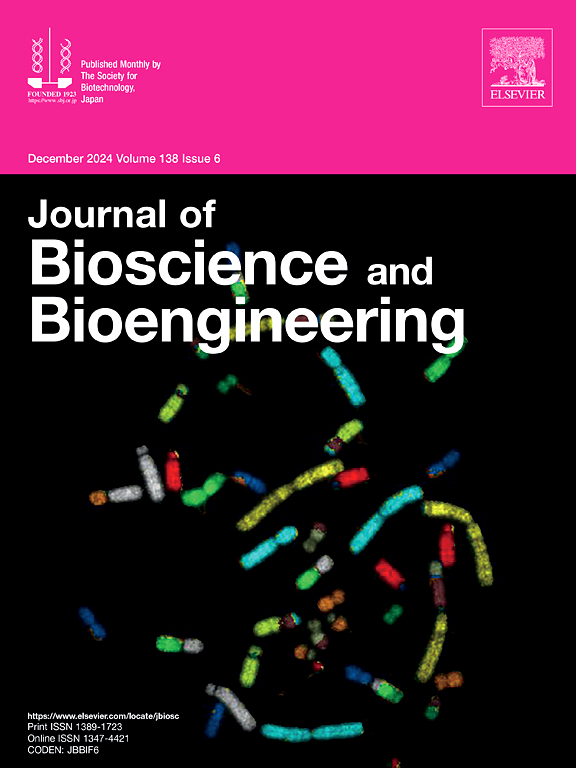Removal of undesirable genes using yeast backcrossing
IF 2.3
4区 生物学
Q3 BIOTECHNOLOGY & APPLIED MICROBIOLOGY
引用次数: 0
Abstract
4-Vinylguaiacol (4-VG) is one of the causative compounds for the phenolic odor characteristics of brewed liquor. In the case of Japanese sake brewing, 4-VG is formed through the decarboxylation of ferulic acid produced by rice koji enzymes from steamed rice. PAD1 (phenylacrylic acid decarborxylase gene) and FDC1 (ferulic acid decarboxylase gene) genes are essential for decarboxylation of ferulic acid in Saccharomyces cerevisiae and the single polymorphisms of both genes show a relationship with ferulic acid decarboxylation ability. While most of the Kyokai yeasts distributed by the Brewing Society of Japan have homozygous non-function fdc1 alleles, many newly isolated natural yeasts for local specialities carry the wild-type FDC1 gene. In our previous research, we found that a crossbreed strain lost a significant amount of chromosomal DNA as it underwent meiosis-like adaptation. Here, we established a breeding approach to exclude undesirable gene alleles (such as the wild-type FDC1 genes) from yeast strains of interest by backcrossing using Kyokai yeasts. Homozygous fdc1 crossbreeds were generated through the three rounds of crossing procedures, and we confirmed the reduction of 4-VG in the culture supernatant of the homozygous fdc1 hybrid strain compared to the parental strain. Importantly, this approach does not include growth selection for the mutation of interest (the fdc1 mutant in the current case). Using various yeast strains generated throughout human history, it may become possible to design and build any yeast strains according to the purpose.
利用酵母回交去除不良基因。
4-乙烯基愈创木酚(4-VG)是造成酿造酒酚类气味特征的原因之一。在日本清酒酿造中,4-VG 是通过蒸米中的米麴酶产生的阿魏酸脱羧形成的。PAD1 基因(苯丙氨酸脱羧酶基因)和 FDC1 基因(阿魏酸脱羧酶基因)是酿酒酵母中阿魏酸脱羧的必要基因,这两个基因的单多态性与阿魏酸脱羧能力有关。日本酿造协会经销的大多数京海酵母都带有同型无功能的 Fdc1 等位基因,而许多新分离的地方特产天然酵母则带有野生型 FDC1 基因。在之前的研究中,我们发现一个杂交菌株在进行减数分裂样适应过程中丢失了大量染色体 DNA。在此,我们建立了一种育种方法,通过使用 Kyokai 酵母菌进行回交,从感兴趣的酵母菌株中排除不良基因等位基因(如野生型 FDC1 基因)。通过三轮杂交程序产生了同源 fdc1 杂交品系,我们证实同源 fdc1 杂交品系的培养上清液中 4-VG 含量比亲本品系低。重要的是,这种方法不包括对相关突变(本例中为 fdc1 突变体)的生长选择。利用人类历史上产生的各种酵母菌株,可以根据目的设计和构建任何酵母菌株。
本文章由计算机程序翻译,如有差异,请以英文原文为准。
求助全文
约1分钟内获得全文
求助全文
来源期刊

Journal of bioscience and bioengineering
生物-生物工程与应用微生物
CiteScore
5.90
自引率
3.60%
发文量
144
审稿时长
51 days
期刊介绍:
The Journal of Bioscience and Bioengineering is a research journal publishing original full-length research papers, reviews, and Letters to the Editor. The Journal is devoted to the advancement and dissemination of knowledge concerning fermentation technology, biochemical engineering, food technology and microbiology.
 求助内容:
求助内容: 应助结果提醒方式:
应助结果提醒方式:


